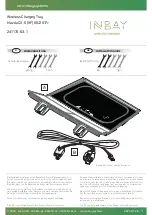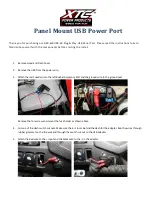
Ensure that the floor mats are securely fastened
again when they are returned after being re‐
moved, such as for cleaning.◀
Driving in wet conditions
When roads are wet or there is heavy rain, briefly
exert gentle pressure on the brake pedal every
few miles.
Ensure that this action does not endanger other
road users.
The heat generated in this process helps dry the
brake discs and pads.
In this way braking efficiency will be available
when you need it.
Hills
Drive long or steep downhill gradients in the gear
in which the least braking is required. Otherwise,
the brake system may overheat, resulting in a
reduction in the brake system efficiency.
You can increase the engine's braking effect by
shifting down, going all the way to first gear, if
necessary.
Downshifting in manual mode of the 8-gear
Sport automatic transmission, refer to page
54
.
Downshifting in manual mode of the 7-gear
Sport automatic transmission with dual clutch,
refer to page
57
.
Avoid load on the brakes
Avoid placing excessive load on the brake
system. Light but consistent brake pressure can
lead to high temperatures, brake wear and pos‐
sibly even brake failure.◀
Do not drive in neutral
Never drive with the transmission in neu‐
tral, with the engine switched off or with the
clutch depressed; otherwise, you will have nei‐
ther the braking action of the engine or nor its
power assistance when braking or steering.◀
Brake disc corrosion
Corrosion on the brake discs and contamination
on the brake pads are furthered by:
▷
Low mileage.
▷
Extended periods when the vehicle is not
used at all.
▷
Infrequent use of the brakes.
Corrosion occurs when the minimum pressure
that must be exerted by the pads during brake
applications to clean the discs is not reached.
Should corrosion form on the brake discs, the
brakes will tend to respond with a pulsating ef‐
fect that generally cannot be corrected.
Condensation under the parked vehicle
When using the automatic climate control, con‐
densation water develops that exits underneath
the vehicle.
Therefore, traces of condensed water under the
vehicle are normal.
Loading
Overloading the vehicle
To avoid exceeding the approved carrying
capacity of the tires, never overload the vehicle.
Overloading can lead to overheating and in‐
creases the rate at which damage develops in‐
side the tires. This could result in a sudden loss
of tire inflation pressure.◀
Secure heavy objects
Never transport unsecured heavy or hard
objects in the passenger compartment, as they
could be thrown around and pose a safety haz‐
ard to the vehicle's occupants during abrupt
braking or evasive maneuvers.◀
No fluids in the cargo area
Make sure that fluids do not leak into the
cargo area; otherwise, the vehicle may be dam‐
aged.◀
Seite 110
Driving tips
Things to remember when driving
110
Online Edition for Part no. 01 40 2 609 184 - 09 11 500
Summary of Contents for Z4 sDrive28i
Page 2: ......
Page 9: ...Notes 9 Online Edition for Part no 01 40 2 609 184 09 11 500 ...
Page 10: ...Online Edition for Part no 01 40 2 609 184 09 11 500 ...
Page 17: ...Cockpit At a glance 17 Online Edition for Part no 01 40 2 609 184 09 11 500 ...
Page 18: ...Online Edition for Part no 01 40 2 609 184 09 11 500 ...
Page 106: ...Online Edition for Part no 01 40 2 609 184 09 11 500 ...
Page 114: ...Online Edition for Part no 01 40 2 609 184 09 11 500 ...
Page 131: ...Professional Radio Entertainment 131 Online Edition for Part no 01 40 2 609 184 09 11 500 ...
Page 132: ...Online Edition for Part no 01 40 2 609 184 09 11 500 ...
Page 149: ...ConnectedDrive Communication 149 Online Edition for Part no 01 40 2 609 184 09 11 500 ...
Page 150: ...Online Edition for Part no 01 40 2 609 184 09 11 500 ...
Page 200: ...Online Edition for Part no 01 40 2 609 184 09 11 500 ...
Page 207: ...Technical data Reference 207 Online Edition for Part no 01 40 2 609 184 09 11 500 ...
Page 219: ......
















































